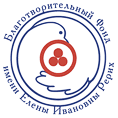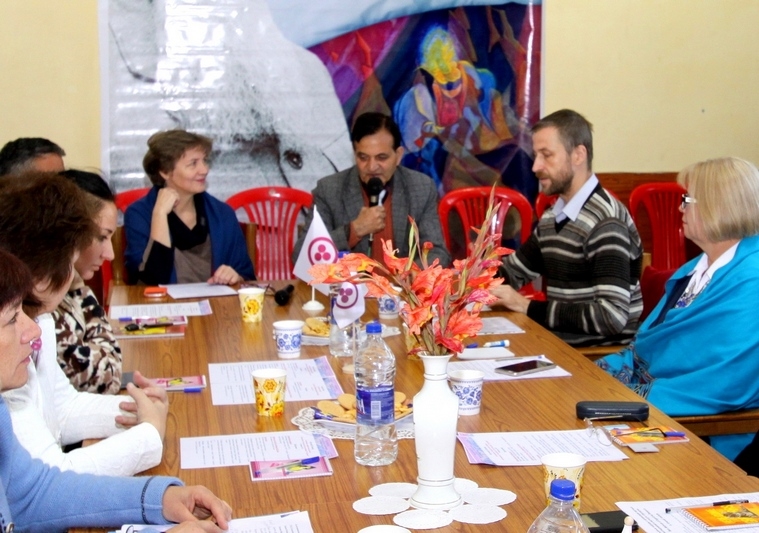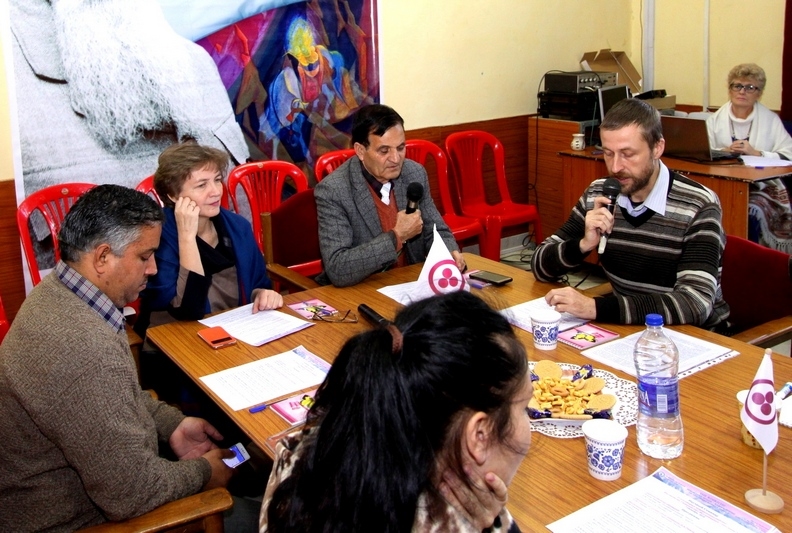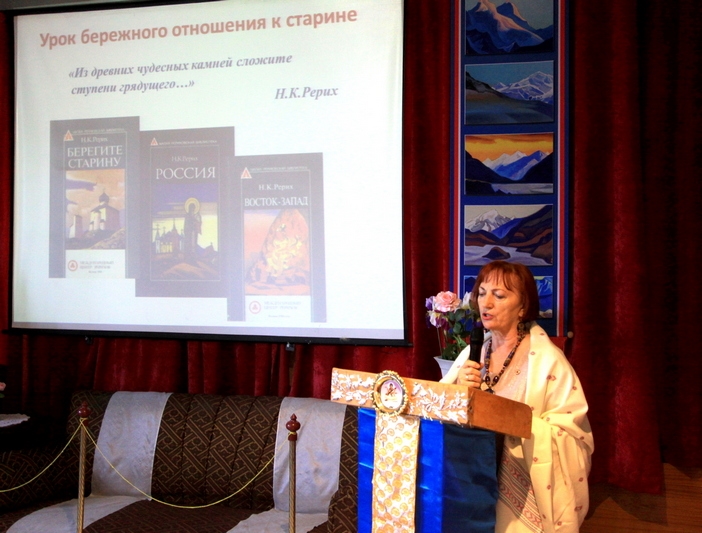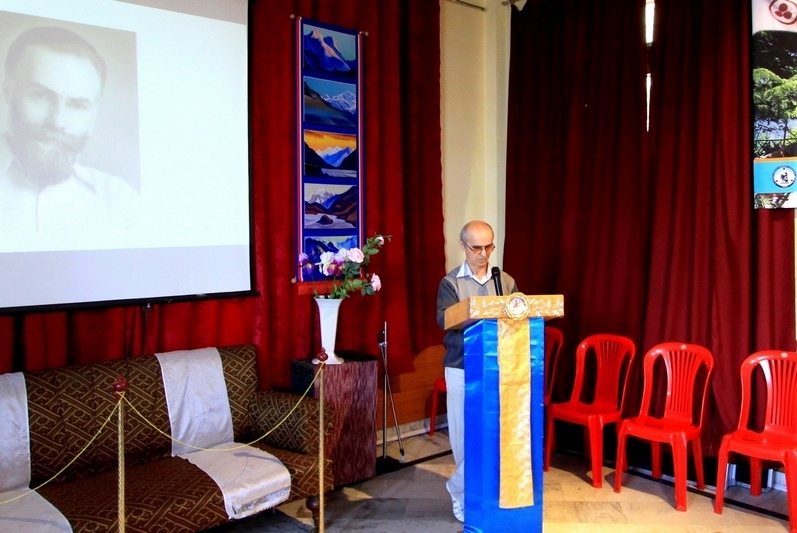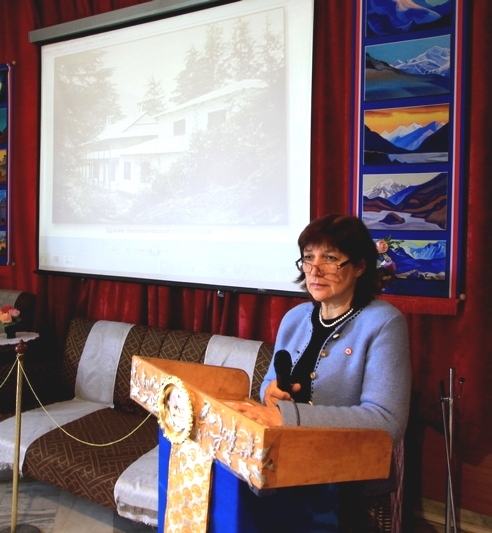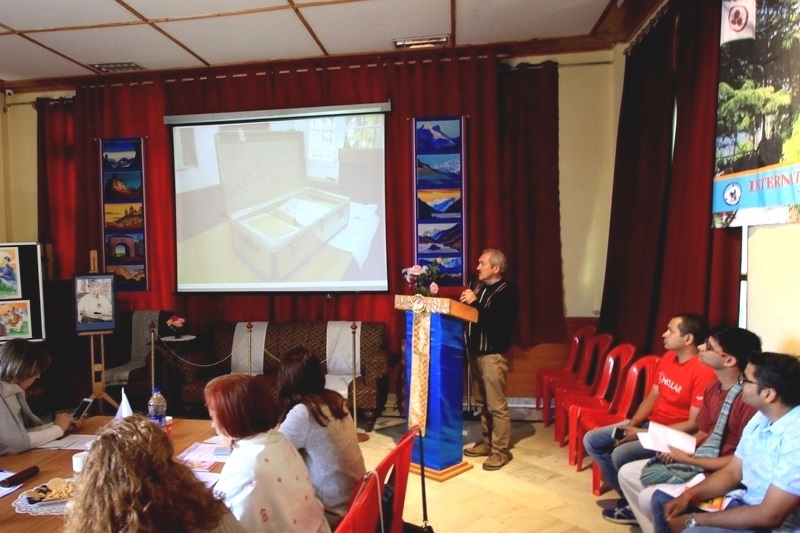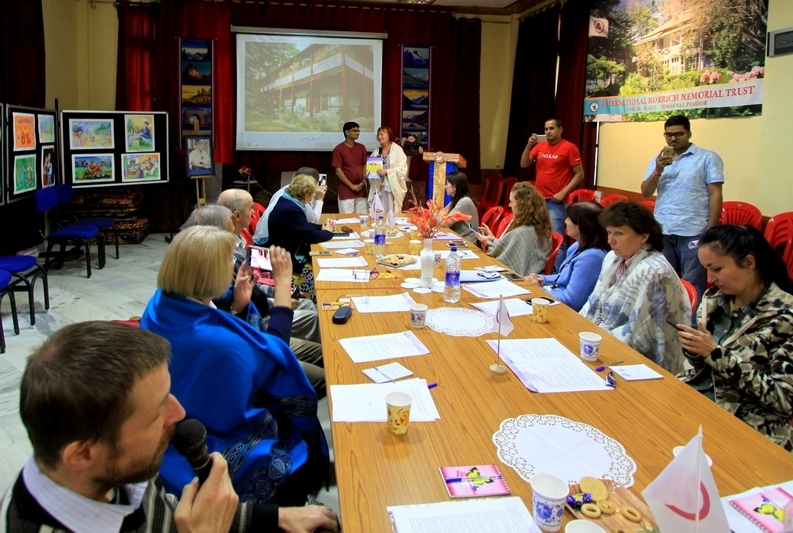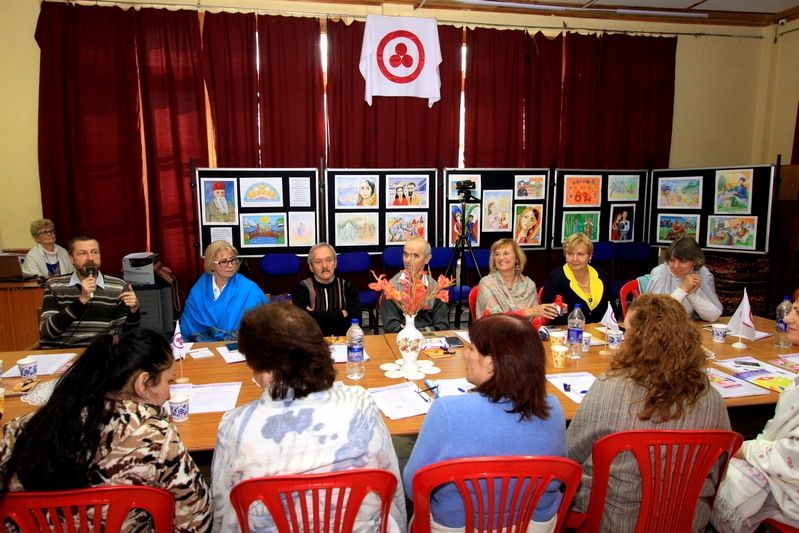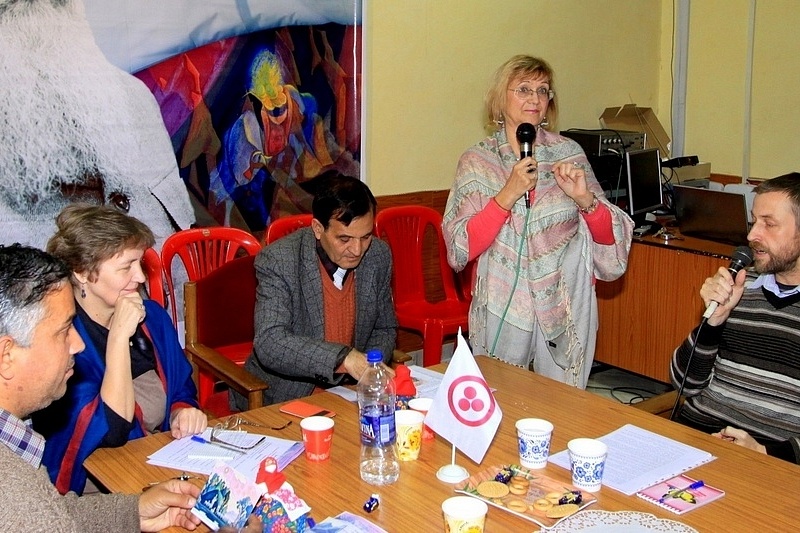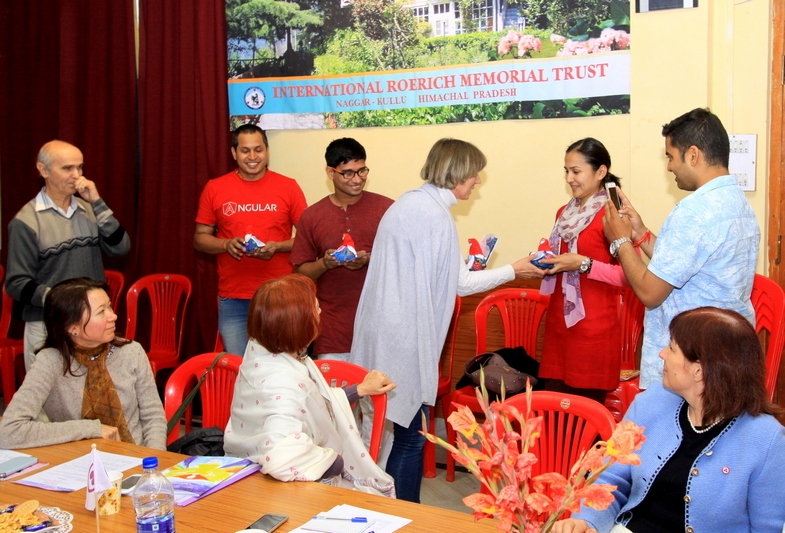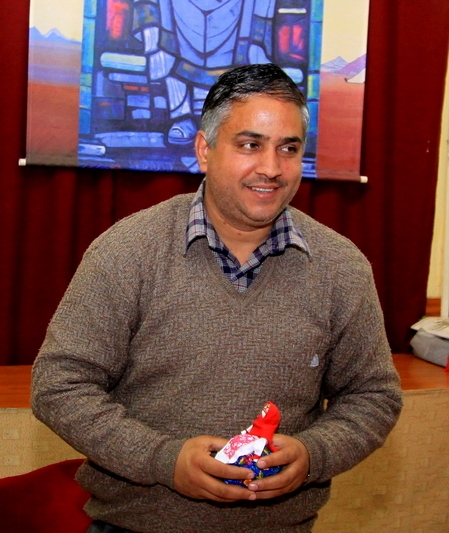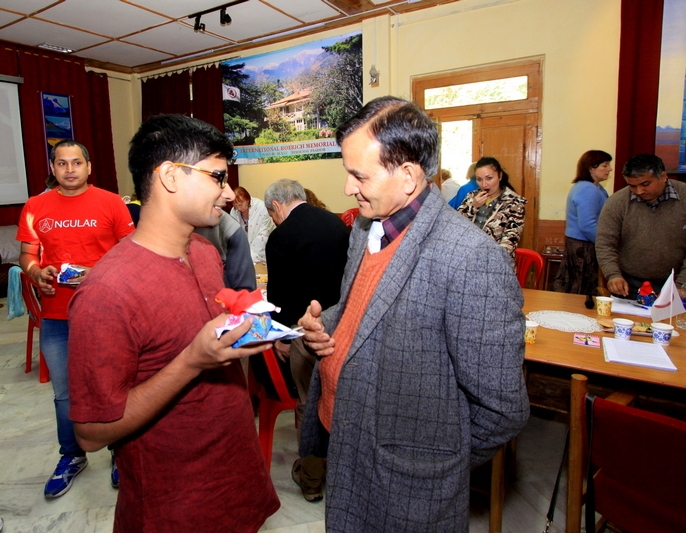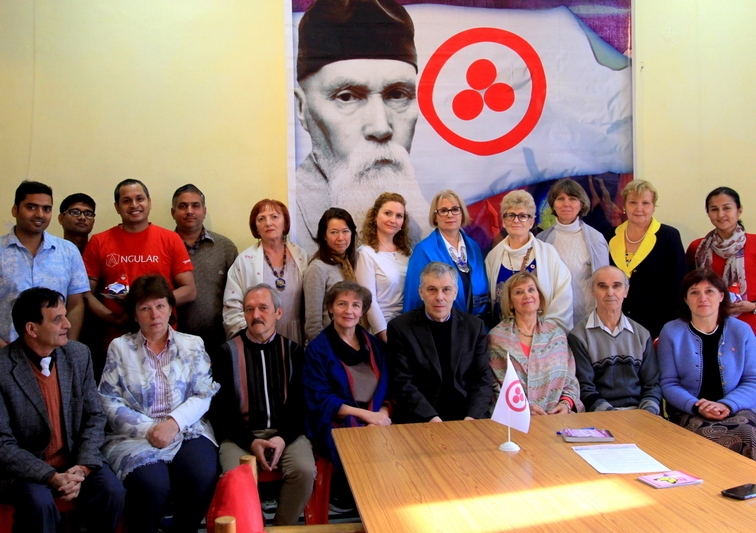Academic Seminar “On Certain Activities of ‘Urusvati’ Himalayan Research Institute” Held in the International Roerich Memorial Trust
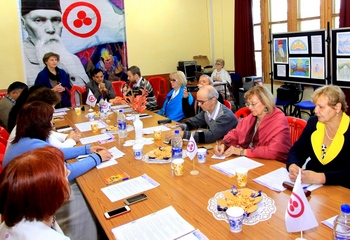
|
|
On October 7, 2018, within the framework of the October Russian-Indian Culture Festival dedicated to the 90th anniversary of the Roerichs’ settling in Kullu, the International Roerich memorial Trust (IRMT), Naggar held an academic seminar “On Certain Activities of ‘Urusvati’ Himalayan Research Institute.”
The Indian Curator of the IRMT Ramesh Chander opened the seminar by welcoming the participants. He noted that holding international academic seminars in the Roerich Estate is not only an important component of the cultural-educational work of the IRMT but also a concrete step towards the revival of ‘Urusvati’ Himalayan Research Institute. The Russian Curator Larisa Surgina working in the IRMT on deputation from the International Centre of the Roerichs, Moscow, remarked that founding of ‘Urusvati’ Himalayan Research Institute was one of the most important evolutionary projects initiated by the Roerichs based on the ideas of the Living Ethics or Agni Yoga, the philosophy of cosmic reality propounding a new synthetic way of knowing.
The paper “Nicholas Roerich – The Guru of Life” by the Russian poetess Olga Slepova, Head, Roerich Society, Zarechny (Penza Region, Russia), was dedicated to the 144th birth anniversary of the great artist, scholar and thinker. His life and art teach us the lessons of life that are more relevant than ever: the lesson of respect for antiquity and preservation of cultural heritage, the lesson of tireless labour for the Common Good, the lesson of love and creation of harmonious family, the lesson of Beauty and Culture, the lesson of heroism and feat of courage, and the lesson of love of motherland and faith in her bright future. The results of Nicholas Roerich’s efforts for the future and Common Good are priceless: more than seven thousand canvases, 27 volumes of literary writings, archeological collections, the Culture Pact and Banner of Peace, and ‘Urusvati’ Himalayan Research Institute. Like all Gurus of Life, Roerich came to help mankind and show the path of development and preservation of peace on the planet. The time has come to make use of his lessons...
The main session opened with the paper by the researcher and project manager from Moscow Vassily Tkachev. The speaker noted that the founders of the Institute Nicholas and Helena Roerich laid down the foundations of a new way of knowing based on the idea that the causes of terrestrial phenomena are found in Space and in the worlds of finer states of matter. The Roerichs viewed various branches of knowledge as interconnected parts of the whole. The Institute combined the methods of empirical science and meta-science. It also attached great importance to moral and ethical foundations. This approach found expression in the structure of the Institute and in the interrelation of various branches of knowledge in its research activities which relied on one hand on the analysis of ample materials collected from the less explored regions of Central Asia, and on the other hand on the principle of worldwide exchange of research data.
The main objectives and research fields of the Institute determined the principles of development of its Research Library which were discussed in the paper by Alexander Pereverzev (PhD in Sanskrit), employee of the International Centre of the Roerichs, Moscow. At present, the Research Library of the Institute contains 14,000 printed editions in different languages: books, magazines, information bulletins, catalogues of publications, etc. The range of its subjects is very broad: from history, archeology and ethnography (Zupanic, N. Les premiers habitants des pays Yougoslaves. Paris, 1919) to neurology and traditional medicine (Cordier, P. Etude sur la Medecine Hindoue. Paris, 1894); and from geography and botany (Aldrich, J.W., Bole, B.P. The Birds and Mammals of Western Slope of the Azuero Peninsula. Cleveland, 1937) to physics and chemistry (King, A.S. The Influence of a Magnetic Field upon the Spark Spectra of Iron and Titanium. Washington, 1912). The Institute cooperated with leading publishing houses. It exchanged publications with 285 Universities, institutes, museums, libraries and learned societies the world over, including the Carnegie Institution and the Smithsonian Institution in Washington, Yale and Michigan Universities, the Metropolitan Museum of Art in New York and many others.
Tatyana Halkevich spoke on the natural science research in ‘Urusvati’ Himalayan Research Institute. One of the main research fields of the Department of Natural Sciences of the Institute was botany. Botany research was conducted in the Kullu valley and other areas of the West Himalayas. It included the comprehensive studies of local flora: plant ecology, phytogeography, and ethnobotany. The following statistics speaks about the scale of the Institute activities. A herbarium numbering 3,700 samples representing 1,500 botanical species was sent to the Michigan University. A collection of seeds and 3,800 samples of the Himalayan flora were sent to the New York Botanical Garden. The National Museum of Natural History, Paris received 2,000 botanical samples.
The Institute studied the so-called “yogic plants” (the plants that have unusual energy properties) and drugs of mineral and animal origin that can be described as life-givers, purifiers and regenerators. It also constructed and equipped a biochemical laboratory for conducting medical research and experiments with medicinal plants. The Department of Natural Sciences also engaged in zoology research, conducted meteorological and astronomical observations, and studied cosmic radiation in high altitude conditions.
The topic of natural science research was further developed by Vladimir Shatko (PhD in Biology), Senior Research Fellow, Tsytsyn Main Moscow Botanical Garden of the Russian Academy of Sciences. He spoke on the herbarium collection of ‘Urusvati’ Himalayan Research Institute he has been classifying and inventorying for several years on deputation from the International Centre of the Roerichs, Moscow, together with Svetlana Potapova, Research Fellow; Scientific Secretary, Russian and CIS Botanical Gardens Council. The main part of the herbarium collection housed in the premises of ‘Urusvati’ Himalayan Research Institute and kept in a big-size trunk made of the wood of Himalayan cedar contains 3,217 leaves (representing 1,041 species, 491 genera, and 140 families) some of which are yet to be identified. Furthermore, 147 herbarium leaves have been discovered in a big suitcase. These samples were collected by Walter Koelz (112 leaves) and S. Ahmed (35 leaves) from the different areas of West Himalayas in 1931–1935. These contain the samples of 46 botanical species (belonging to 18 genera and 11 families) not represented in the main herbarium collection of the Institute. Apart from that, a bunch of herbarium leaves from the Smithsonian Institution, US National Herbarium, Washington, has been discovered. These contain the samples of Chinese flora. It can be assumed that this collection was specially ordered from the US for more precise identification and comparison of the materials collected by the Institute in West Himalayas, since at that time the literary sources on the flora of that region were scarce.
The systematic and comparative analysis of the ‘Urusvati’ Institute herbarium collection allows to conclude that by species diversity it is a rather representative collection of the flora of the Kullu valley and neighbouring areas (Lahaul-Spiti, Ladakh, Kinnaur, and Chamba). This herbarium collection represents one third of the Himachal Pradesh flora: 2/3 of its families and 50% of its species.
Studying the epic heritage of the peoples of Central Asia was one of the research priorities of ‘Urusvati’ Himalayan Research Institute. The paper by the researcher and engineer from Krasnodar (Russia) Rozalia Latkina was dedicated to George Roerich’s studies of the Epic of King Gesar. In his writings The Epic of King Kesar of Ling, The Nomadic Tribes of Tibet and Trails to Inmost Asia, George Roerich attempted to give a thorough description of the epic of Gesar. Gesar is a mythological hero of Tibeto-Burmese, Mongolian and a number of Turkic peoples (Salars, Yellow Uighurs, Tuvans and Altaians). Analyzing the historical roots of the legend of Gesar, George Roerich concludes that “it is an ancient specimen of nomadic poetry created jointly by several nomadic peoples” and its nucleus belongs to the shared Central Asian heritage that dates back to the 7–8th centuries A.D. This nucleus contains the fragments of ancient tribal epics dating to remote antiquity and possibly of pre-Mongolian and pre-Tibetan origin. In Tibet, one can find frescoes of Gesar, and all ancient temples there were consecrated to “Huang-ti,” i.e. were the temples of Gesar.
For the nomads of East and North Tibet the legend of King Gesar is not merely a heroic tale. It is their religion, and the embodiment of their hope for better future. As George Roerich observed, “the latest chapter of the extensive epic Gesar is still being written.”
Interestingly, IRMT has preserved several copybooks with the handwritten text of the Epic of King Gesar in Tibetan.
Unfortunately, not all announced papers could be presented. Due to the recent rage of elements in West Himalayas (Kullu valley had experienced three days of continuous rain, while at the same time Lahaul and Spiti were almost buried under snow), several invited scholars could not come to Naggar. But despite the occasional difficulties the academic and research work in the IRMT goes on, and regular academic seminars is one of the ways towards the revival of ‘Urusvati’ Himalayan Research Institute.

